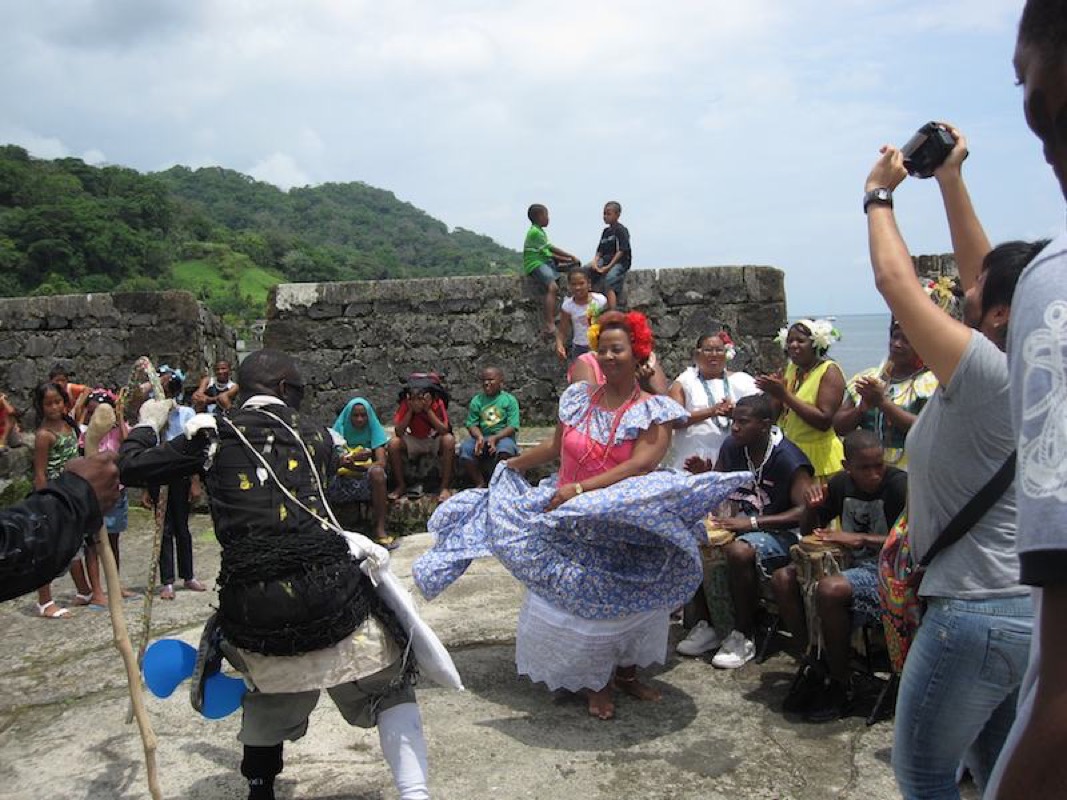Congo Couple Dancing at Local Event (Photo by Oronike Odeleye)
As in most African/Black Diaspora call-and-response traditions centered on the drum, there is a relationship between the drummers and dancers as much as there is between the primary singer and the chorus. Although Congo dance is a couple’s dance, a female practitioner always enters the space alone to begin a new dance before being approached by a male Congo “suitor.” At the start of a new Congo song, one female dancer stands in front of the drummers and chorus as the lead singer begins to sing and mark time by clapping. The chorus and drummers match the lead singer’s tempo, and the dancer marks time by stepping side-to-side with rhythm. Both the dancer and the lead singer have the ability to goad the drums faster or slower depending on how they choose to interpret and conduct the rhythm through their voices and bodies. Holding up the edges of her skirt, for example, the dancer may attempt to increase the pace of the song by waving her skirts to the tempo she desires. Likewise, lead singers often start a new song using a single-clap-per-beat tempo and increase to a faster double-clap-per-beat tempo to urge the drummers to pick up the pace.
Excerpted from “Prologue” and “Chapter Two” of When the Devil Knocks: The Congo Tradition and the Politics of Blackness in 20th Century Panama, The Ohio State University Press (in press)

